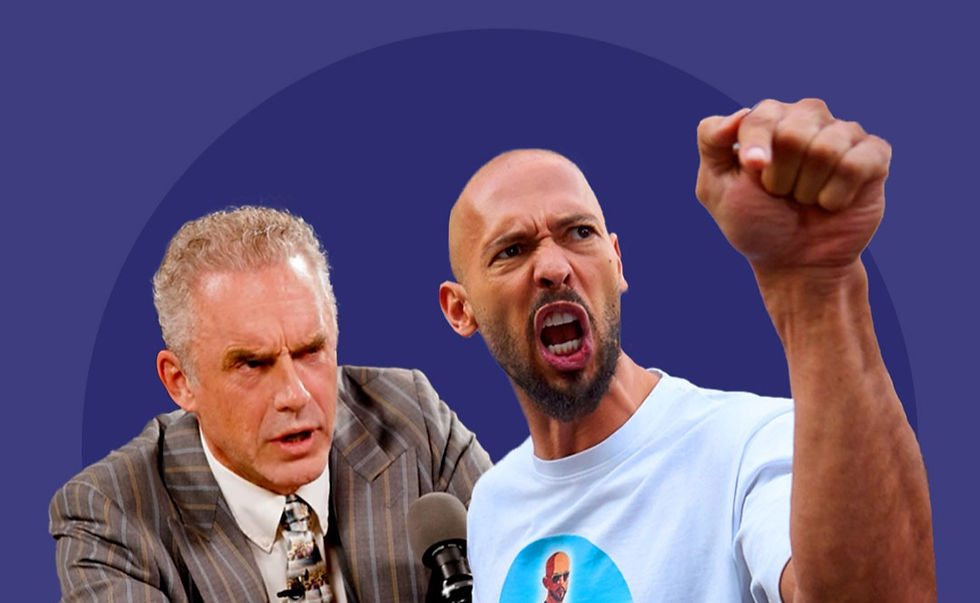Reflections on the Sexual Assault Trial of Former World Junior Hockey Players: More Than Just a Few 'Bad Apples'
- Gillian Smith-Clark

- Nov 10
- 5 min read
Updated: 17 hours ago
by Gillian Smith-Clark

"Layered underneath that fabric of an unhealthy masculine ideal is the broader objectification and commodification of women and gender expansive people, and a culture that too often confuses coercion with consent."
The exact number remains unverified, but a group of young men got the text from Michael McLeod to come to a London, Ontario hotel room that night. E.M. testified at trial that as many as eleven men were in the room over the course of the evening; the Crown’s argument stated that ten showed up. The trial record does not fix a single, undisputed number for how many got the text or how many were present in a way that all sides accept – what we do know is that there was a group text sent to multiple players: some responded, others didn’t. It has also been reported that McLeod, after having consensual sex with E.M., went out into the hallway of the hotel that night and invited more people into the room.
No one involved, as far as we know, recognized that this could be a situation where a young woman might need help, that she might have found herself in a situation she was not anticipating, might have felt blindsided – possibly scared and overwhelmed in an environment where her judgment was impaired by alcohol, was surrounded by men who were not only strangers to her, but physically intimidating.
There are so many lingering questions about both the events of that night and the subsequent trial and verdict – the lack of empathy by the judge and prevalence of victim blaming and shaming (e.g. Justice Carroccia’s petty and demeaning finding that E.M.’s evasive response to a mistake she had made about her weight was “telling,”) that was present both at trial and in the verdict; the noticeable absence of expert testimony on trauma; the gruelling nine days of testimony that E.M. was put through on the stand, a judicial system that seems incapable of handling sexual assault cases well and a 91-page final written decision that reeks of bias and internalized miso
gyny.
Further, a crucial and haunting question is: Out of those men who didn’t respond or participate, why did none question or intervene in any way? Reach out for help or advice from a friend, coach or parent? And by extension, how can we work as individuals and as a society to ensure that future outcomes, in similar situations, end differently?
The question of the young men who did nothing to help is one that immediately invokes a toxic mixture of strong emotions – sadness, fear, revulsion, anger, contempt – yet understanding the motivation behind the thought processes of the men involved can provide at least some insight into how to change behaviour, change culture, and offer a measure of hope for the future.
Understanding the ‘Why’
Beyond the bystander effect, fear of social consequences and moral disengagement, we live in a cultural landscape that often characterizes an ideal vision of masculinity as one of power, dominance, aggression, emotional suppression, and impulsivity. Pete Hegseth articulated this philosophy perfectly in a recent speech to U.S. generals, where he describes ideal leadership culture as defined by ‘aggressiveness and risk-taking.’ Hegseth went on to say, “[…] an entire generation of generals and admirals were told that they must parrot the insane fallacy that quote, our “diversity is our strength”.”
Layered underneath that fabric of an unhealthy masculine ideal is the broader objectification and commodification of women and gender expansive people, and a culture that too often confuses coercion with consent. Underneath that layer, at the base of everything, is a cultural foundation where boys are inundated from early childhood with the message that they must suppress and lock down their own emotions or risk rejection from those they depend on and love. Activist and writer Jeff Perera speaks about this phenomenon particularly well in a recent podcast episode for The 44 North, “Moving From Harmful to Helpful Ideas of Manhood” alongside his written companion essay, “Five Truths on Not Buying into the Manosphere Bait and Switch.”
The result, on that particular evening in London in 2018, was that the text received probably didn’t trigger any alarm bells or uneasiness because this type of behaviour is not only normalized but expected. And too often, it is still celebrated.
These were young, male, elite athletes who were raised in an environment where objectifying and commodifying women was so typical, so woven into the fabric of their society, that they didn’t see it as alarming – they probably didn’t see it at all. Therefore, there was no cause for alarm or an impulse to intervene.
One of the many unintended consequences of boys and young men being systematically taught emotional suppression (and often punished and shamed for certain types of emotional expression, e.g. ‘boys don’t cry’) from an early age, is that they also learn to subconsciously ‘switch off’ their feelings, the prerequisite for an ability to switch off cognition, critical thinking and their humanity in the moment. That foundational mechanism can allow an otherwise intelligent, kind, talented young human to ignore any alarm bells that might be sounding in their heads. This isn’t a case of ‘a few bad apples’, but a foundational problem requiring systemic change.
Taking Action: What makes a difference?
It starts with us. As individuals and as a society, we play a foundational role in shaping how boys and all genders understand masculinity — what it means to be a “good man,” how to express emotion, how to relate to others with empathy and respect, and how to take responsibility for our actions. Together, we can build a new vision of healthy masculinity — one that values wisdom, integrity, moral courage and thoughtfulness.
A simple place to start is by celebrating and recognizing the right qualities in all genders – by recognizing our own humanity so that we can see it in others – and by finding everyday role models who exhibit strength through emotional intelligence, compassion, and moderation.
Further Reading
One Night in London by Katie Strang, Dan Robson, and Ian Mendes, NY Times
On Healthy Masculinity by Helena Nikitopoulos and Asante Haughton
Analyzing Justice Maria Carroccia’s Hockey Canada Verdict by Sean Fine and David Ebner, The Globe and Mail
The Skeletons in Hocket Canada’s Closet are our Own, by Asante Haughton, The 44 North
Resources




Comments